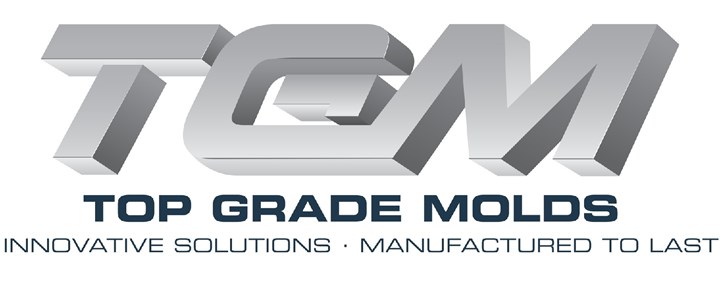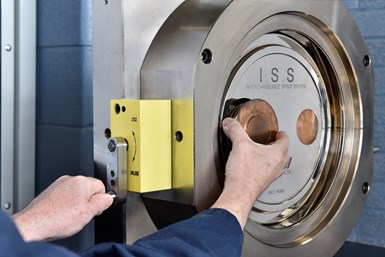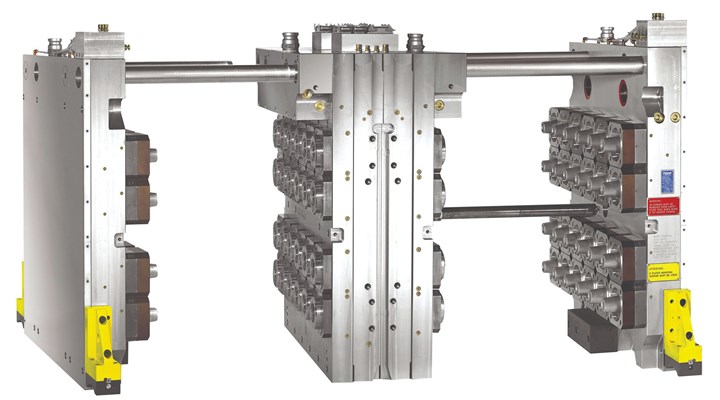
2x24 stack mold for an 8-ounce thin-wall cup. Photo Credit, all images: Top Grade Molds Ltd. (TGM)
Who is Top Grade Molds Ltd. (TGM)?
Vince Ciccone, President & CEO at Top Grade Molds and Co-Owner: Top Grade Molds Ltd. started in 1964 and is still a privately/employee-owned company with 150 employees. There are two facilities in Mississauga, Ontario, Canada, totaling 120,000 square feet of space. The main facility designs and manufactures injection molds for the industrial packaging, thin-wall food packaging, caps/closures, medical and technical industries.
The second facility is our TG Tech Advanced Technical Center, which houses our assembly and injection molding machines for mold testing and qualification, mold repair/refurbishiment, turnkey system integrations, small lot customer production runs and R&D testing of our newest innovative technologies.
Featured Content
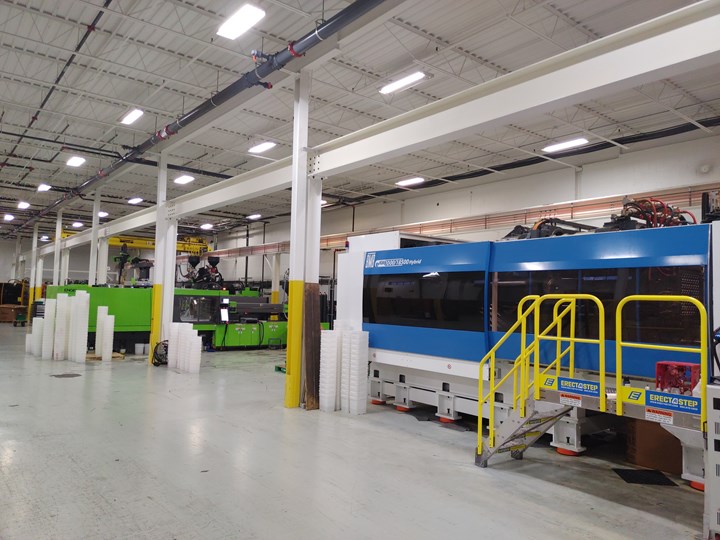
Top Grade Mold’s Advanced Technical Center houses technology and talent for customers’ small production runs, dimensional analysis and non-destructive testing. Photo Credit: Top Grade Molds Ltd.
What do you view as your chief competitive advantage(s)?
Ciccone: Our chief competitive advantage is the ability to address market demands by developing new technologies to help our customers stay ahead in their business. We specialize in packaging or commodity-style molds—strictly plastic injection molds, multi-cavity, stack molds, etc. We’re talking about molds that need to produce a lot of pieces over a lot of years. That’s where we remain competitive.
We also do upfront developmental work with our customers, whether it’s unique packaging solutions or re-inventing the packaging. We develop and design solutions for our customers before we build the mold.
The TG Tech Advanced Technical Center is key to this mission as it allows us to offer small production runs for our customers, dimensional analysis and even non-destructive testing (NDT). We also have a lot of experience in hot runner development and manufacturing, too.
What are some of the critical moldmaking-related technologies in TGM’s arsenal?
Ciccone: Our five-axis machining centers. Although not the solution for everything, these machines allow us to perform much more creative yet cost-effective machining practices without sacrificing time. We also developed a universal fixturing system that enables us to handle parts safely and accurately, yielding more efficient machining.
In addition to providing polymer 3D printing in the product developmental stage to help bring our customers’ ambitions to life, we have recently been experimenting with additive metal manufacturing to determine the benefits this technology offers us.
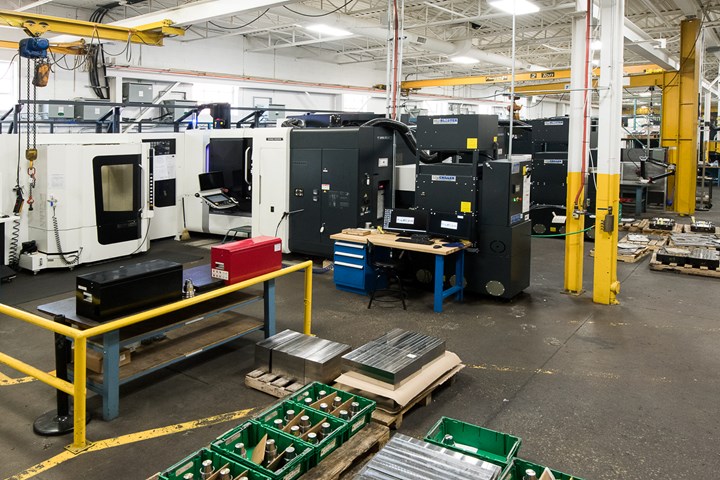
Five-axis machining centers and universal fixturing systems permit creative, cost-effective solutions for customers.
Share the story behind the opening of the TG Tech Advanced Technical Center.
Ciccone: Eight years ago, we were frustrated with using outside sources to develop and prove new technology solutions for our customers. Four years later (2017), we opened our TG Tech Advanced Technical Center and installed highly sophisticated testing equipment to ensure we could deliver a perfectly functional, innovative and efficient product.
We equipped the facility with seven custom machines—from 160 tons to 1,000 tons of high-speed packaging equipment. The latest is our Engel co-injection machine for developing and commercializing new co-injection technology.
The impetus for the Tech Center is our development work. It became very difficult to develop technology and solutions for customers in the field, and we lost control of the intellectual property (IP) of the technology. We knew there had to be a better way. So, we wanted to bring that work in-house to develop it, run it, learn it and perfect it. Eventually we filed for IP because our internal work allows us to capture essential data; experimenting leads to proper IP. Basically, we created a better system of working, which in the end allows us to export our technology. Having this capability enables us to run experimental molds for long periods under actual real-life production settings.

The TG Tech facility serves as an innovative laboratory for product testing.
For example, we’re testing the locking system of an injection-compression process that can cycle 3.5 million times. This allows us to learn all the faults, make changes and perfect the locking system to go to market with it.
TG Tech also allows us to offer customers small-scale production runs to perform mold trials, R&D testing of innovations/technologies and provide initial system integration to accommodate high-speed robots and automation systems for rigid packaging like IML.
TG Tech is also the home of our complete innovative laboratory, which is capable of conducting many different types of product testing, such as:
- Environmental conditioning test
- Multi-positional drop test
- Hydrostatic pressure test
- Pressure differential test
- Vibration leakproof test
- Dynamic top load compression test
- Stacking (static top load) test
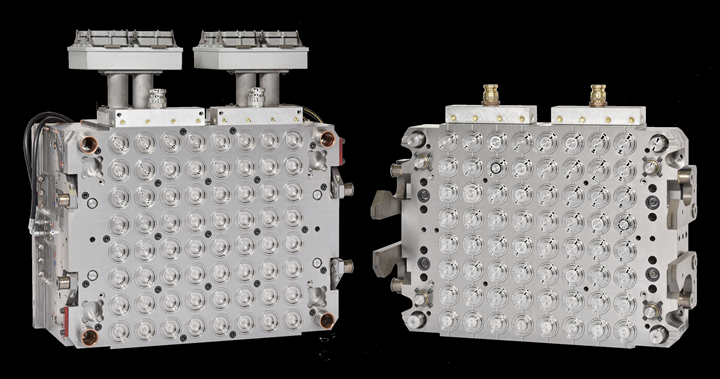
Sixty-four-cavity ring mold.
Describe the most interesting/notable mold project your company was awarded.
Ciccone: The most notable project is our collaboration with M&M Industries and Engel to develop co-injection technology. In this case, the co-injection development addresses the market requirement to add PCR material to the new product. The middle PCR material is sandwiched between inner and outer layers of virgin material.
For example, this new co-injection process uses more than 30% of recycled material in the core during the production of five-gallon pails. Co-injection makes it possible to concentrate the recycled material in the component’s core and encapsulate it in a layer of virgin material. The virgin and recycled materials are of the same type to ensure that the sandwich-molded parts can also be recycled at their end of life. This process can be used for a variety of applications.
To achieve high recycled content without compromising product quality, the system switches from recycled to virgin material close to the cavity, directly at the injection nozzle, combining the two molten plastics. The new system also uses a needle shut-off hot runner.
What has been the most significant change you’ve seen in the company in 35 years?
Ciccone: The evolution of our organizational, manufacturing and moldmaking innovation has been an integral part of TGM’s growth and success.
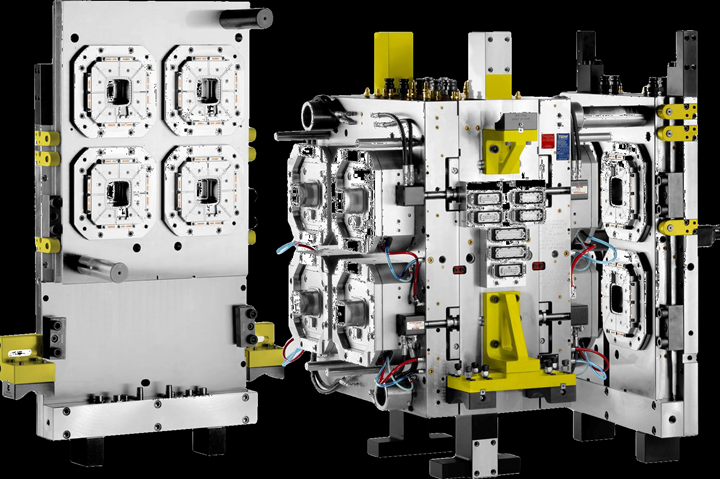
A 2x4 cavity stack mold with a modular mold change system.
What are the most significant ways you expect your business to evolve in the next three to five years regarding technology, business strategies, place in the market, etc.?
Ciccone: We see continuing collaboration with various industry leaders to address consumers' adverse perceptions of plastics to help address sustainability concerns.
RELATED CONTENT
-
Predictive Manufacturing Moves Mold Builder into Advanced Medical Component Manufacturing
From a hot rod hobby, medical molds and shop performance to technology extremes, key relationships and a growth strategy, it’s obvious details matter at Eden Tool.
-
How to Optically Polish Aluminum
There are two methods for optically polishing aluminum - knowing the right one for your project will save you time and money.
-
Maximum RPM Machining: Necessities of High-Speed Moldmaking
Mold shops will thrive if they practice an ‘all-aspects’ process to HSM, which includes the machine, cutting tool, toolholder, proper balance and application support.









